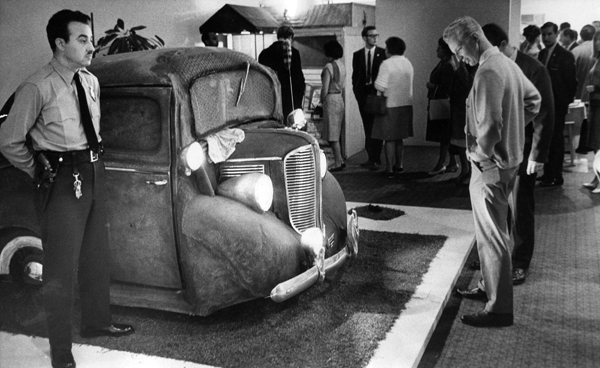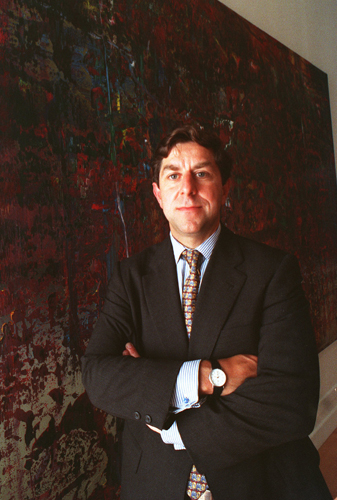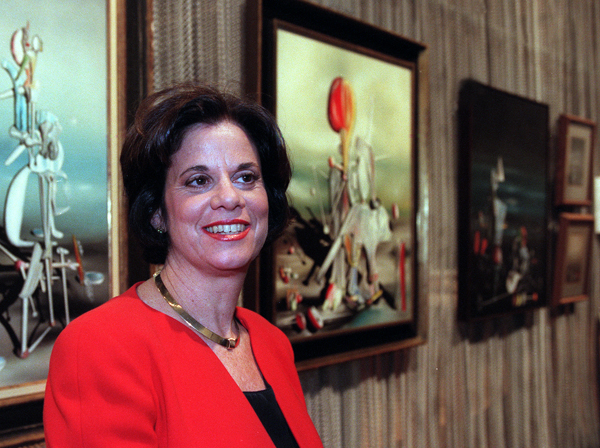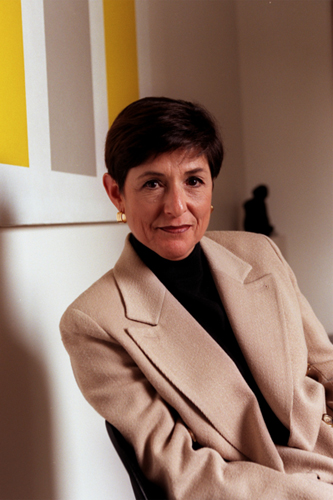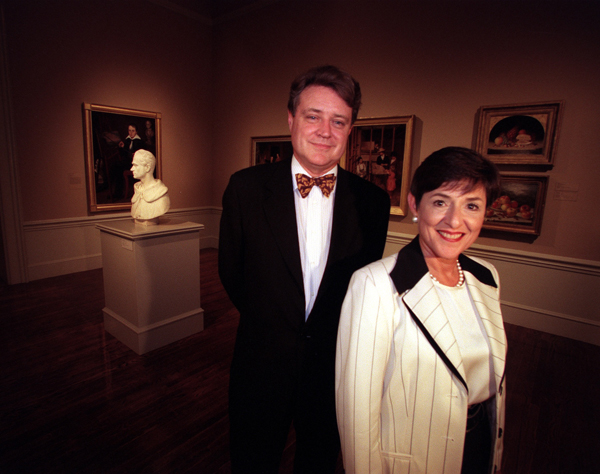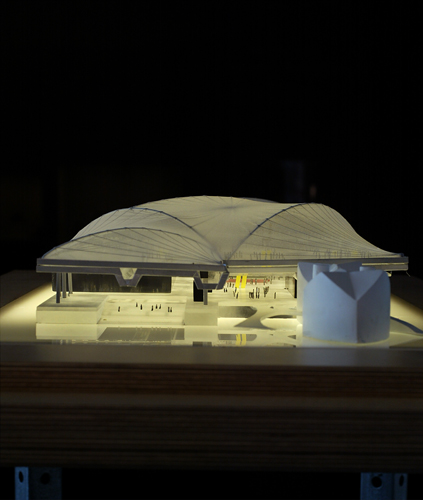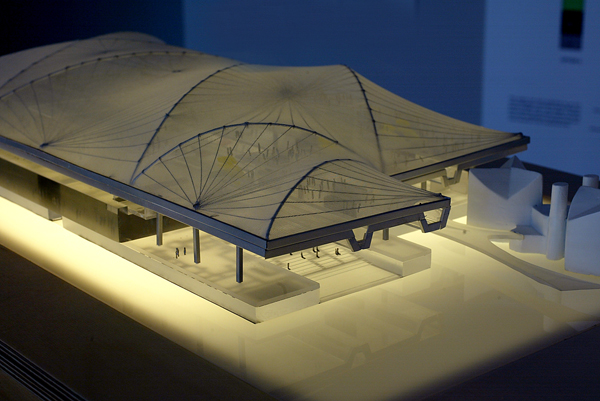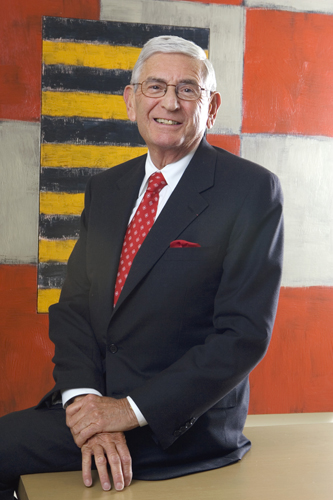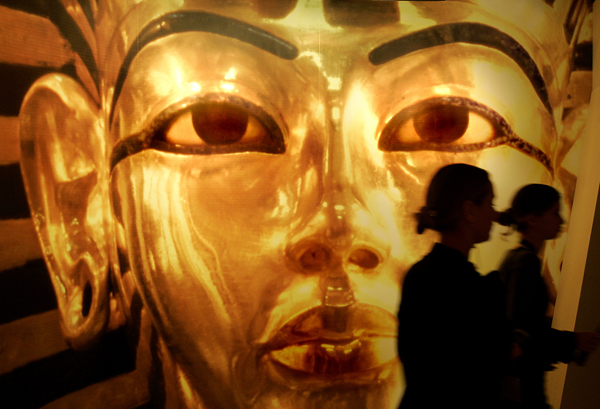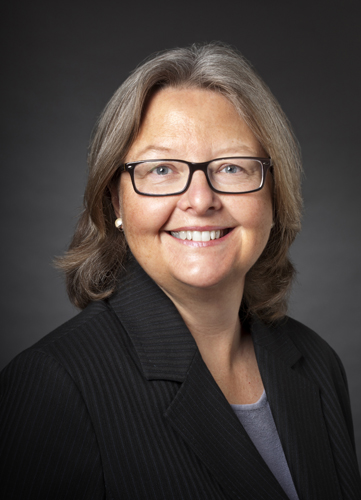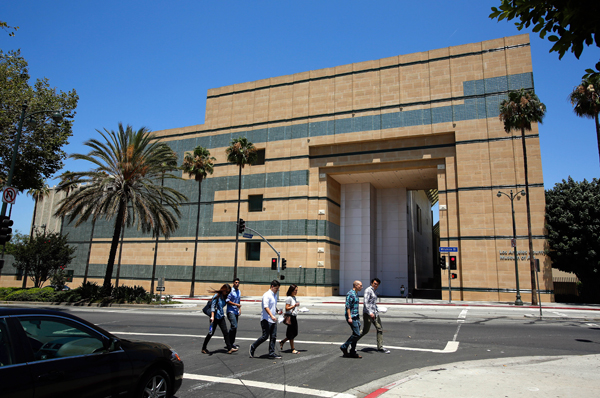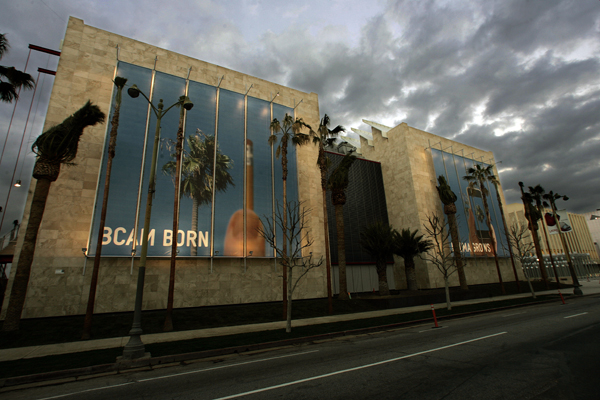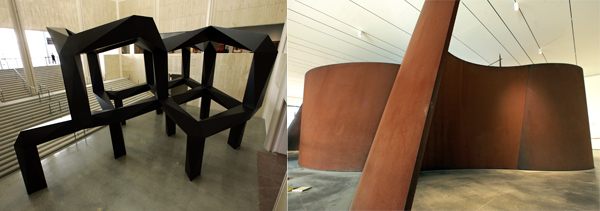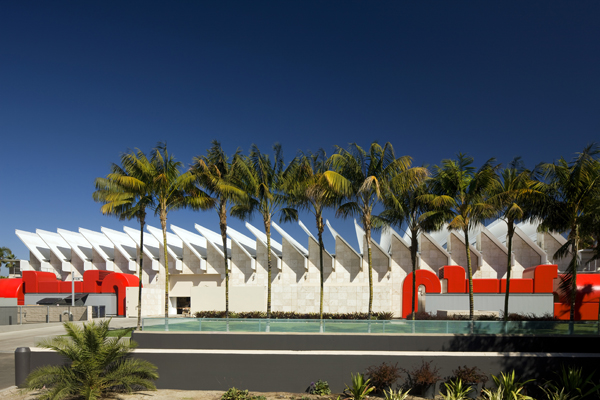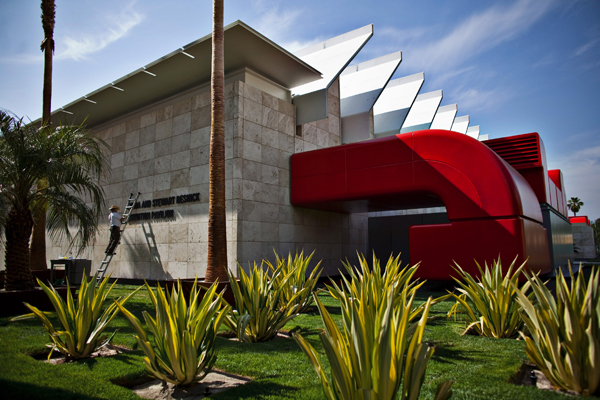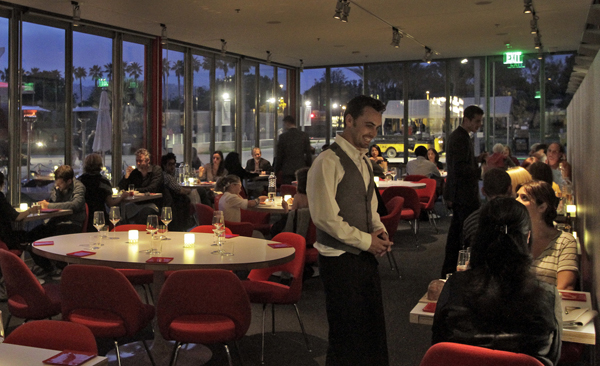LACMA’s 50 years on Miracle Mile
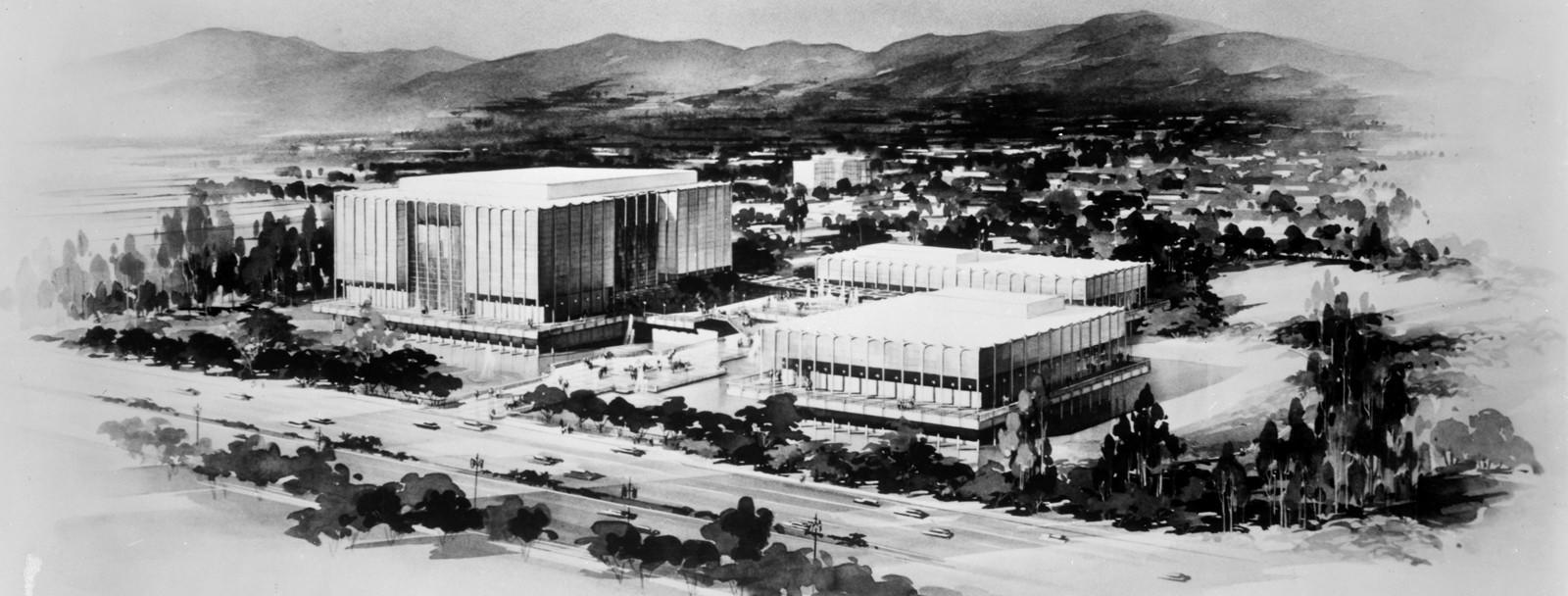
Five decades ago, the Los Angeles County Museum of Art officially opened its Miracle Mile campus.
During LACMA’s dedication rites, L.A. County Supervisor Ernest Debs told the museum’s board and benefactors, “All of us and all of our children and children’s children will forever be in your debt for this magnificent achievement.”
The museum has endured growing pains and financial struggles but has also become a Los Angeles landmark. Scroll through our timeline for a look back at LACMA’s controversial architectural milestones, important art acquisitions and influential directors throughout the years.
LACMA opens
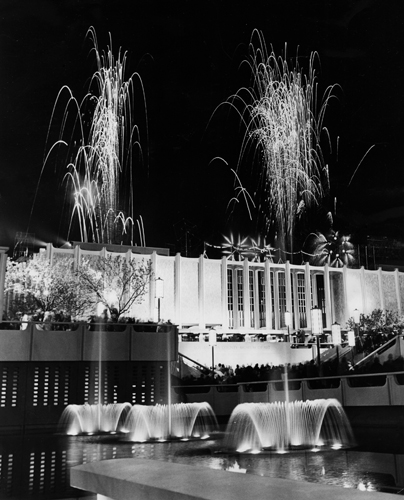
Four years after being established as its own institution separate from the Natural History Museum in Exposition Park, the Los Angeles County Museum of Art opens to the public in its Wilshire Boulevard location.
The nascent institution comprises three buildings designed by prominent L.A. modernist William Pereira: the Ahmanson Building (which houses the permanent collection), the Bing Center and the Lytton Gallery.
During the dedication ceremony, museum president Edward W. Carter says the institution heralds “a cultural coming of age not just for Los Angeles but for the West.”
First director resigns
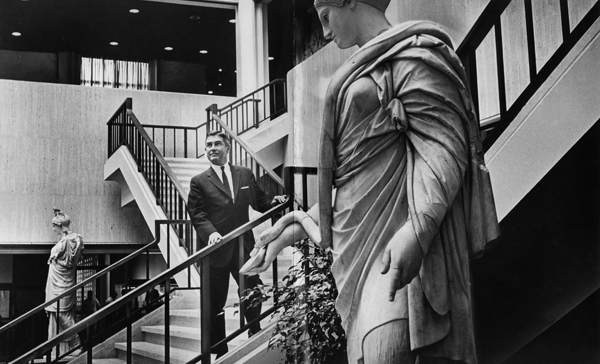
LACMA’s first director, Richard F. Brown, steps down, citing “irreconcilable policy and operation difficulties” with the museum’s board of trustees. Brown, the museum’s director since its inception in 1961, was asked to resign after many disagreements with the board, including the selection of LACMA’s architect.
“Along with a justifiably proud community I am proud as one of those who brought the new museum into being,” Brown writes in his resignation statement. “But it was, and still is, my firm opinion that the museum could have been substantially greater in layout and design.”
Meanwhile, museum board chairman Edward W. Carter blames Brown’s “inability to deal adequately with the administrative problems of a major art museum.”
‘Back Seat Dodge ‘38’ causes controversy
An exhibition featuring the works of installation artist Edward Kienholz opens after much public controversy. Led by gubernatorial candidate Warren M. Dorn, the L.A. County Board of Supervisors demanded that the museum cancel the exhibit, calling it “repugnant,” “revolting” and “pornographic.” The objections centered on Kienholz’s “Back Seat Dodge ’38,” which features abstract figures of a couple in an erotic embrace in a car’s backseat.
In a compromise agreement, the car door is kept shut except during tours, when museum staffers open it to reveal the tableau within.
New director named
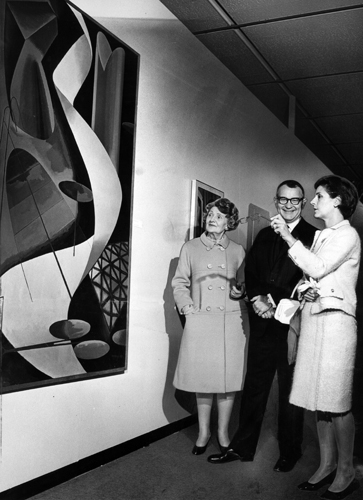
Kenneth Donahue is named director of LACMA. Donahue, hired by former director Richard F. Brown in 1964 to serve as his deputy, had been acting director since February. Donahue’s vision for the museum is centered on educational function, Times art critic Henry J. Seldis writes.
Lytton Gallery renamed
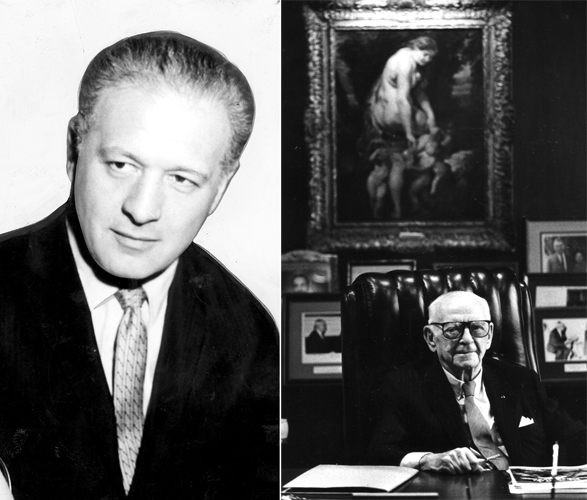
The Lytton Gallery — originally named for financier Bart Lytton — is renamed the Frances and Armand Hammer Building after a disagreement over the museum’s collection. Lytton wanted it to feature regional artists, while museum officials favored internationally acclaimed work.
“The Medicis particularly promoted the artistic output of their beloved city of Florence,” Lytton tells The Times. “While I make no immodest presumption that I can begin to match the Medicis, I want to do what I can.”
Hammer, oil magnate and art collector, is a major donor and member of the museum’s board of trustees.
‘Art and Technology’ exhibit opens
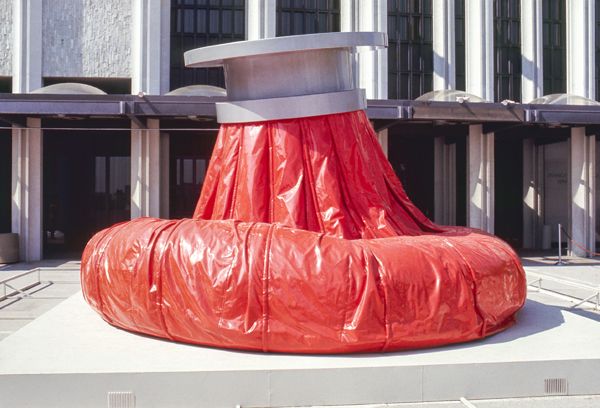
Curator Maurice Tuchman’s revolutionary “Art and Technology” exhibit opens at LACMA after its debut at the 1970 World Exposition in Osaka, Japan. The “A&T” project pairs prominent global artists, including Andy Warhol, Robert Irwin, Roy Lichtenstein and James Turrell, with major aerospace, science, entertainment, technology and engineering corporations.
“We are confronted with eye-opening, mind-boggling, sometimes deliberately thought-destroying experiences, designed to bring us closer to perceptual reality than most of us have ever come before,” The Times’ Henry J. Seldis writes in his review of the exhibition.
Black art exhibition opens
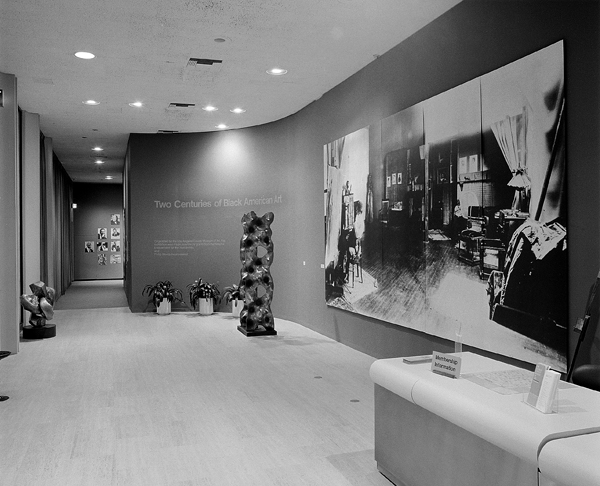
The landmark exhibition “Two Centuries of Black American Art” opens to the public after African American community leaders pressure LACMA to give more prominence to work by black artists. The exhibit, guest-curated by artist and scholar David Driskell, features 200 works by 63 artists from 1750 to 1950. Some 88,000 patrons attend the exhibition.
“Even the least edifying of the objects here were created against the almost insurmountable odds of racism and bigotry,” The Times’ Henry J. Seldis writes. “Revelatory about this massive display are the instances of individual artistic genius that it offers, often by artists who would surely be far more familiar to us were it not for the color of their skin.”
King Tut sets a record
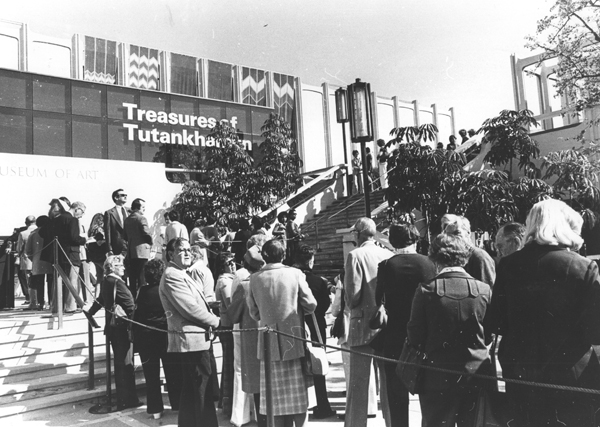
“Treasures of King Tutankhamun,” which features 55 objects on loan from the Cairo Museum, begins its four-month stay at LACMA. Times art critic Henry J. Seldis calls the 3,000-year-old pieces from King Tut’s tomb “resplendent.”
“There is hardly an object here that would not cause the most experienced viewer to observe it in awe and wonder,” Seldis writes.
The exhibit draws 1.25 million visitors — a LACMA record that has yet to be broken.
Donahue retires
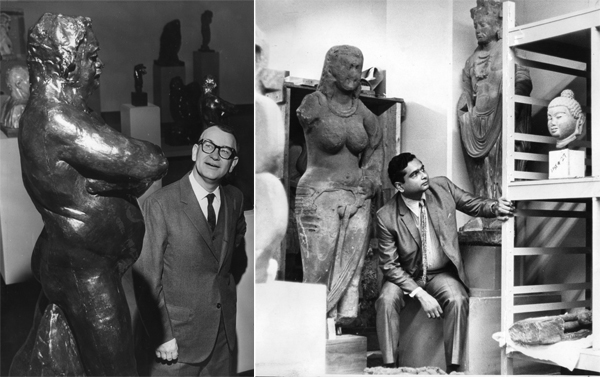
LACMA director Kenneth Donahue announces his retirement after 13 years in the post. Donahue, recovering from a heart attack he suffered the previous year, becomes curator of European art. The museum’s chief curator, Dr. Pratapaditya Pal, is named acting director until the position is filled.
Rusty Powell named director
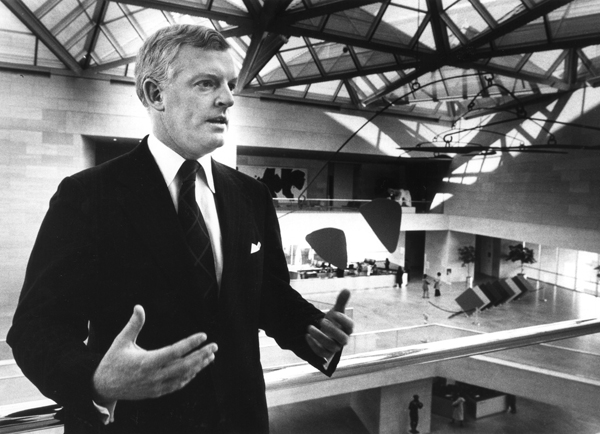
Earl A. “Rusty” Powell III is named director of LACMA after an 18-month search to fill the position vacated by Kenneth Donahue. The 36-year-old Washington, D.C., curator comes from the National Gallery of Art, where he oversaw international exhibitions.
“I look forward to working with the community, particularly in encouraging the participation of young collectors and your large contemporary art scene,” Powell tells The Times.
Impressionism exhibit draws big crowds
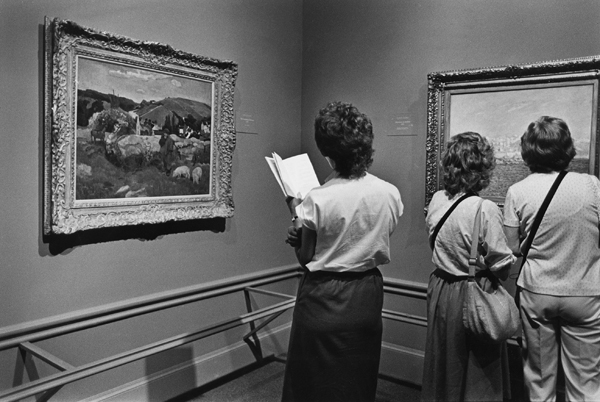
“A Day in the Country: Impressionism and the French Landscape” opens at LACMA as part of the Olympic Arts Festival, a cultural preface to the 1984 Olympic Games in Los Angeles. The exhibition, which showcases paintings by Paul Cezanne, Claude Monet and Paul Gauguin among others, is attended by 460,000 people.
Anderson building opens
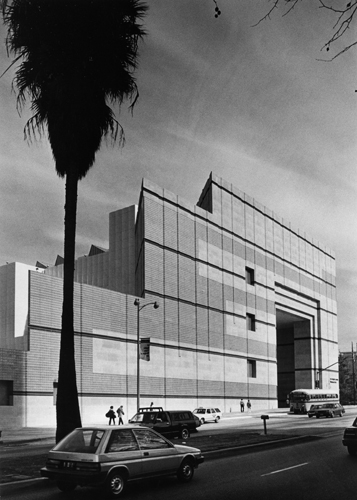
LACMA’s Robert O. Anderson building opens to the public. Designed by architectural firm Hardy Holzman Pfeiffer, the $35.3-million, 115,000-square-foot building houses modern and contemporary art. (The edifice was later renamed the Art of the Americas building.)
“One heads for the galleries energized by bold new architecture and nagged by worries that this iron-pumping hunk of a building may appear a trifle too mid-’80s, too ‘Miami Vice’ 10 years down the line,” Times art critic William Wilson notes in his review of the new building. “Well, the old buildings taught us what blandness achieves. Time tends to side with daring and flourish, especially in museum buildings because it makes them lovable.”
Sculpture garden opens
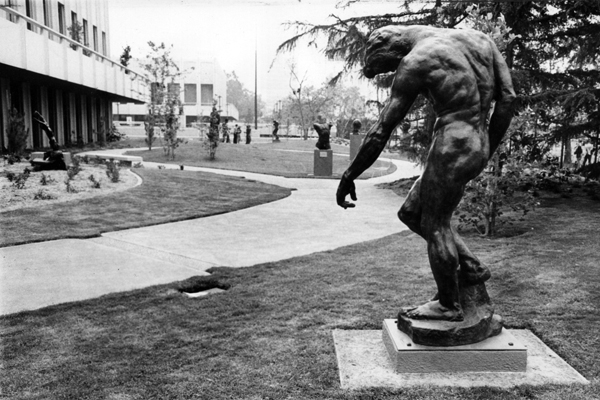
The B. Gerald Cantor Sculpture Garden opens to paying and nonpaying visitors. The garden features eight bronzes by Auguste Rodin as well as six sculptures by Emile-Antoine Bourdelle and Georg Kolbe — two of the French master’s followers.
“This very elegant garden is Southern California’s major source for the study of 19th-Century sculpture,” museum director Earl A. Powell tells The Times before the garden opens. “We wanted people — even in cars — to be able to engage the garden from outside.”
Japanese art pavilion opens
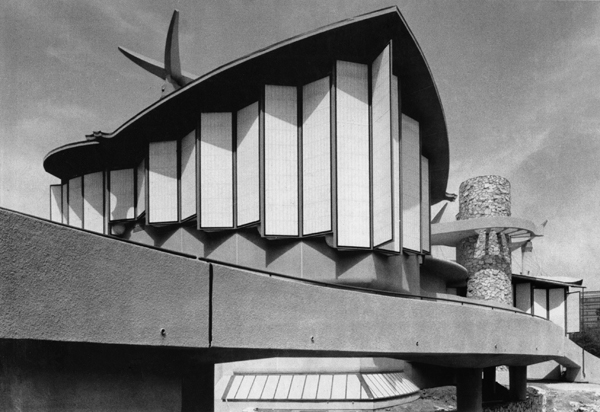
Bruce Goff’s Pavilion for Japanese Art opens to the public. The innovative building was designed to showcase traditional Japanese hanging scrolls and folding screens with natural daylight; the pavilion’s exterior walls are made of Kalwall, a translucent material that allows light in.
The pavilion “is a work of the highest order of imaginative independence, utterly practical in the realization of its aims, unfettered in inventive impulse,” The Times’ William Wilson writes. “Far from clanging with existing LACMA buildings, it somehow focuses and integrates the agreeable exoticism of the Anderson Building and the shady central court into the feeling of a place that is at once welcoming and off life’s beaten track. LACMA’s decision-makers suffered a stroke of genius approving a building that may well be itself a work of genius.”
Powell leaves for Washington, D.C.
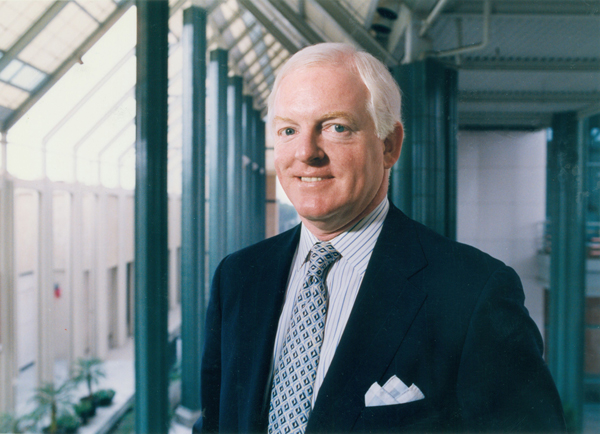
LACMA director Earl A. “Rusty” Powell III is named director of the National Gallery of Art in Washington, D.C., bringing his 12-year tenure in Los Angeles to an end. Powell is credited with transforming “the once sleepy county museum into a bustling, urban showcase,” according to The Times, doubling the museum’s membership and annual attendance.
Michael Shapiro named director
Michael E. Shapiro is named LACMA director, succeeding Earl A. “Rusty” Powell. The appointment of Shapiro, chief curator of the St. Louis Art Museum, surprises many critics who expected the trustees to select a more experienced candidate.
Shapiro says he aims to “create a vision of an art museum for the 1990s as well as for the new century ahead,” despite “recessionary times.”
Shapiro resigns under duress
After less than a year at the helm of LACMA, director Michael E. Shapiro announces his resignation. His abbreviated tenure is marked by budgetary distress, layoffs and tension among staff members, and he departs under duress.
Ronald B. Bratton, chief deputy director, and Stephanie Barron, curator of 20th century art, take the administrative and curatorial reins — roles they occupy for 2 1/2 years during the search for a new director.
LACMA acquires May Co. building
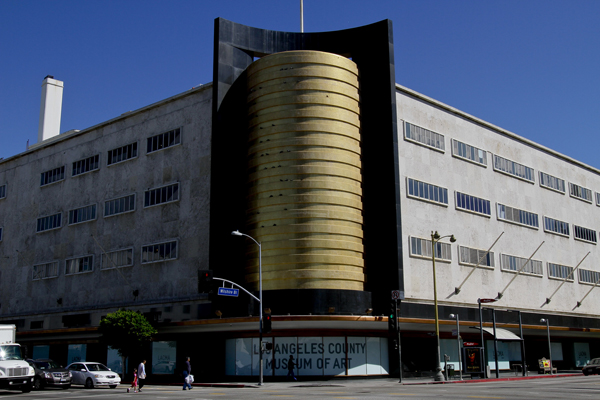
The county provides $25 million for LACMA to acquire and renovate the May Co. department store building adjacent to the museum complex. The 1939 Streamline Moderne-style building was designated a Los Angeles Historic-Cultural Monument in 1992.
Picasso exhibition pleases public and critics
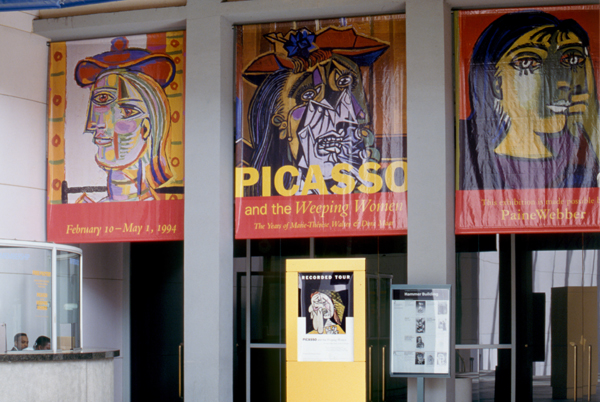
“Picasso and the Weeping Women: The Years of Marie-Therese Walter and Dora Maar” opens to rave reviews and large crowds. The exhibit, which centers on Picasso’s 1937 “Weeping Woman With a Handkerchief” and works like it, draws more than 153,000 visitors.
“Is it possible for an exhibition to fully coax forth the sources of a painter’s compelling imagery?” Times art critic Christopher Knight writes. “Can the mysterious soup of thought, feeling and accident that meld in making a work of art really be laid out? Can a show truly burrow inside an artist’s head? … [This] marvelously engaging exhibition … comes as close as is likely possible to accomplishing that formidable feat.”
LACMA splits director position
Nearly two years after director Michael E. Shapiro resigns, LACMA decides to split the top job into two and names Andrea L. Rich, executive vice chancellor of UCLA, as the museum’s first president and chief executive officer. Rich will oversee museum administration and fundraising and help in the search for a art scholar director (a position that will now be second in the museum’s leadership hierarchy) to oversee curatorial operations.
Andrea Rich, Graham Beal share top job
The board of trustees appoints Graham W.J. Beal, a contemporary art expert and director of Omaha’s Joslyn Art Museum, as LACMA’s director, reporting to president Andrea L. Rich and overseeing artistic programs at the museum.
“My biggest hope would be that LACMA becomes a model of the kind of museum that acts as a magnet for its total community, that involves all levels of the community, [who] will feel that it owns this place,” Beal tells Times art critic Christopher Knight. “This community has all the ingredients, and if it doesn’t fly apart from centrifugal force, it could be a really extraordinary model of what a really genuine multicultural society is. The museum can be that too.”
LACMA West opens
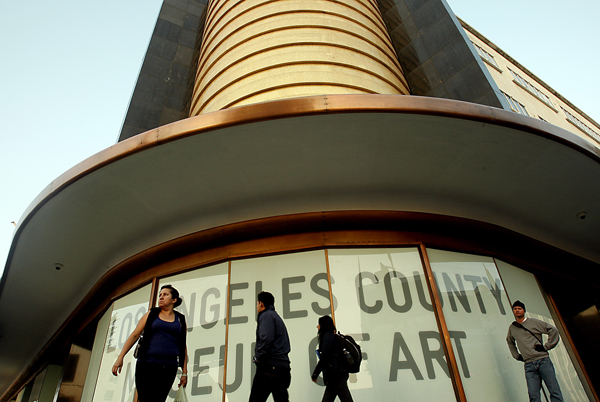
LACMA West opens in the May Co. department store building. The satellite facility contains a gallery for children and families, an art workshop, a gallery for visiting exhibitions and more.
Van Gogh show draws huge crowds
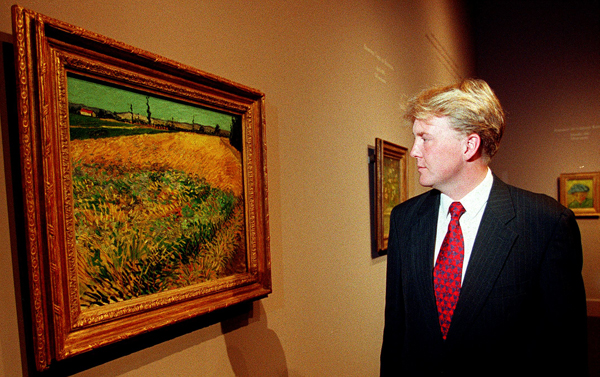
The immensely popular exhibition “Van Gogh’s Van Goghs: Masterpieces From the Van Gogh Museum, Amsterdam,” which encompasses the artist’s career, opens. More than 821,000 visitors line up to see the exhibit.
Hancock Park gets a facelift
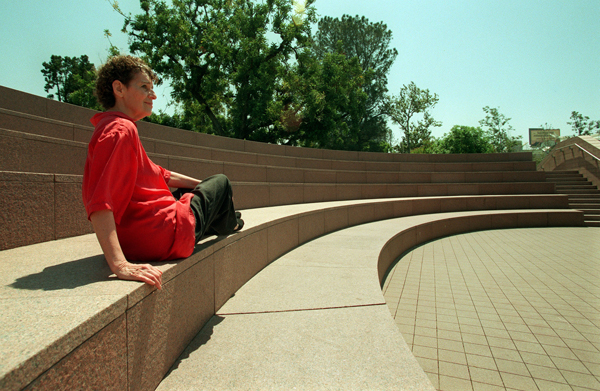
The Hancock Park Improvement Project is complete, and the LACMA-adjacent park (designed by landscape architect Laurie Olin) is inaugurated with a free public celebration. The $10-million renovation replaced dead trees and bare earth with picnic facilities, walkways, viewing sites for the La Brea tar pits and a 150-seat red granite amphitheater designed by artist Jackie Ferrara.
“This isn’t just a park; it’s a park with fossils and art,” LACMA president Andrea L. Rich tells The Times.
Beal leaves and Rich takes the reins
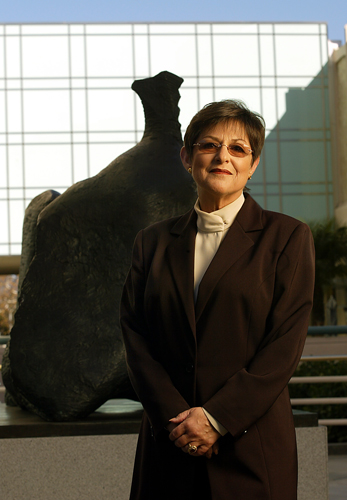
Director Graham W.J. Beal is selected to head the Detroit Institute of Arts. The museum expands the roles of President and Chief Executive Andrea L. Rich to include Beal’s art-focused duties — a decision that sparks controversy in the art world because Rich is a former UCLA administrator with no formal art training.
“The most important thing to me is that LACMA not lose the momentum it has,” says Rich, who has overseen the museum’s recent boom in membership and financial growth. “When I came in, everything needed work — everything from computers to janitors to the physical facility to the financial structure. I’ve spent four years fixing that. It’s in pretty good shape, and some really outstanding people have emerged. I can give greater administrative authority to people who have proven themselves so I can focus and work more closely with the curators.”
LACMA votes to raze and rebuild
LACMA’s board unanimously approves a radical proposal by Dutch architect Rem Koolhaas to demolish the museum’s three original buildings and the 1986 Anderson addition and replace them with a vast single structure topped by a tent-like roof.
The museum’s leaders set out to raise funding for the project — an estimated $400 million.
Eli Broad pledges to pay for new building
Billionaire philanthropist Eli Broad, one of LACMA’s trustees, will pay for “every penny” of a new contemporary art building, museum officials announce. The building is projected to cost $50 million, and Broad pledges an additional $10 million for art acquisition. The plan marks a new direction for LACMA after the failed Koolhaas project.
LACMA approves Renzo Piano’s expansion plan
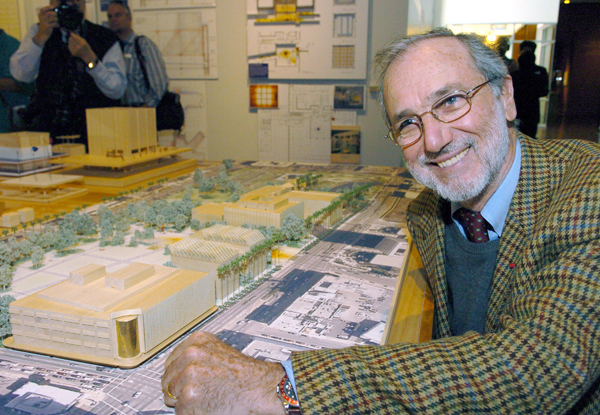
LACMA’s board approves an expansion plan by Italian architect Renzo Piano to add a 20,000-square-foot entry pavilion, an 800-foot-long pedestrian spine linking the museum’s disparate edifices and the planned Broad Contemporary Art Museum, named for its sole donor, Eli Broad, who selected Piano as the project’s architect.
“All cities are a mess,” Piano tells the Times. “The question is how you tie this mess together.”
The design differs vastly from Dutch architect Rem Koolhaas’ plan, which failed to secure funding.
Andrea Rich resigns
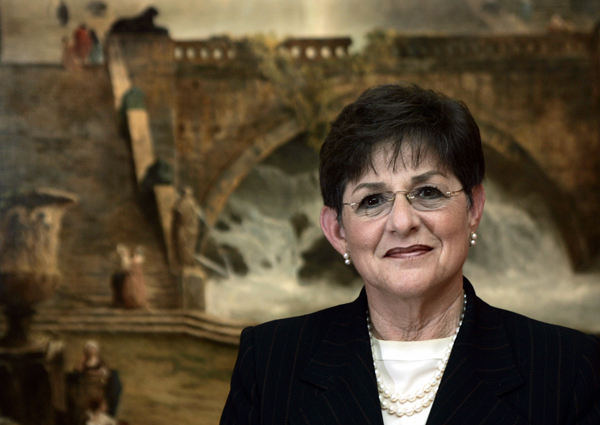
LACMA’s president and director Andrea L. Rich announces she will resign in November. The appointment of former UCLA administrator Rich was controversial because she was not an art scholar. However, Rich’s tenure has been praised for bolstering LACMA’s finances and popularity.
“It’s been a terrific 10 years, but 10 years is a long time,” Rich tells The Times. “A lot more needs to be done, with new energy. The place is in great shape. I feel very good. I wouldn’t move on if I didn’t feel that the administration was in great shape, and we were financially in great shape.”
King Tut returns
King Tut returns to LACMA for the first time since the record-setting 1978 exhibit. “Tutankhamun and the Golden Age of the Pharaohs” draws 937,000 visitors but is met with mixed reviews. Critics lament the exhibit’s exclusion of King Tut’s solid gold funerary mask and complain about inflated ticket prices.
McGee and Kilgallen murals lost
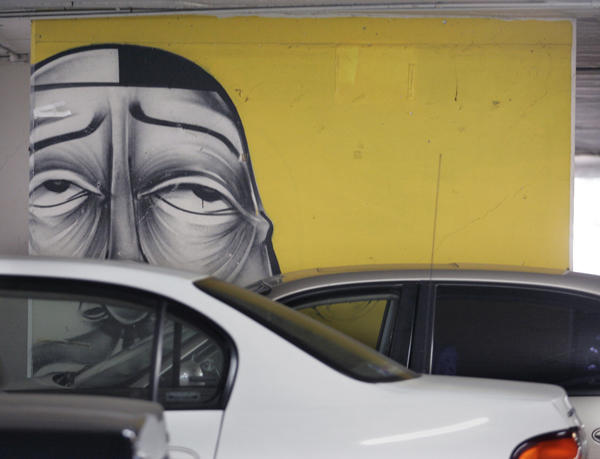
LACMA demolishes its parking garage to make way for a $60-million contemporary art gallery, funded and overseen by billionaire Eli Broad. Many art fans mourn the loss of the garage’s graffiti-inspired murals by Barry McGee and the late Margaret Kilgallen.
LACMA commissioned the husband-and-wife street artists to create the murals in 2000. Kilgallen died of cancer less than a year later.
“I always thought it was a temporary thing,” McGee tells The Times days before the building is razed. “My stuff, in particular, I don’t give a darn about. … Margaret’s work, of course, I like seeing it. But I can’t imagine saving it or chaining myself to the wall or anything like that.”
Michael Govan appointed director
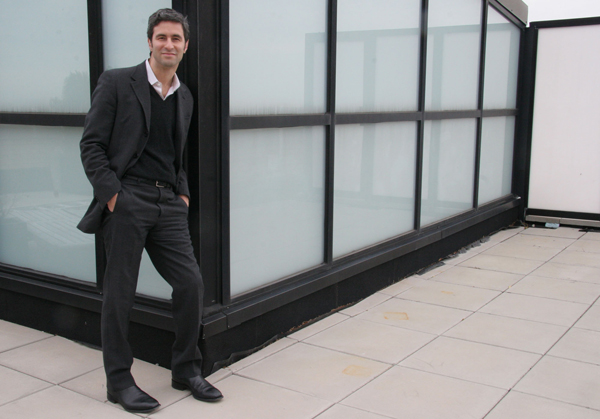
Michael Govan is appointed LACMA director. Govan, 42, is a well-known and highly praised figure in the art world and comes to Los Angeles from New York’s Dia Art Foundation.
“Los Angeles is a great city,” Govan tells The Times. “It’s home to more creative people than anywhere in the world. It’s the future. I think the museum is a sleeping giant.”
‘Urban Light’ illuminated
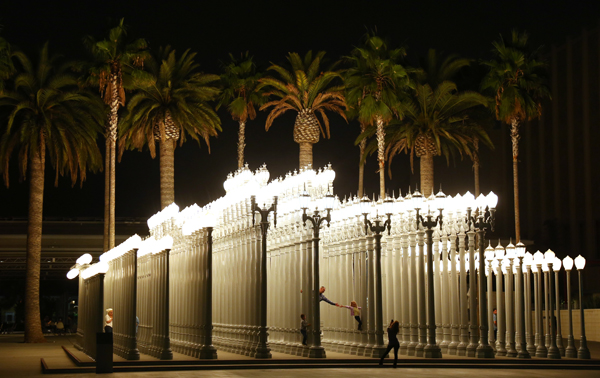
Chris Burden’s “Urban Light,” an outdoor installation of 202 restored antique cast iron street lamps illuminates the plaza between the LACMA’s main campus and the new Broad Contemporary Art Museum for the first time.
The installation is symbolic of a museum’s mission, Burden tells The Times.
“It sounds kind of corny, but when you walk through the lamps into the museum, it’s like a pathway to enlightenment,” he says.
‘Smoke’ and ‘Band’ go on view
Two important sculptures go on view for the first time. Tony Smith’s “Smoke” is installed in the newly reconfigured atrium of LACMA’s Ahmanson Building, and Richard Serra’s “Band” occupies a ground-floor gallery of the Broad Contemporary Art Museum.
“Smoke,” an “extraordinary, monumental work,” according to Times art critic Christopher Knight, is built from 43 identical polyhedrons and spans 45 feet long, 33 feet wide and 22 feet tall. Smith designed the sculpture in 1967.
“Band,” Serra’s 2006 sculpture, is built from 10 enormous torqued steel plates, 13 feet tall.
“It radiates, like a force field,” Knight writes. “As you enter its sphere of influence, it pulls you in. … Some of the curved volumes are womb-like and comforting, others are explosive and thrilling.”
LACMA’s footprint expands
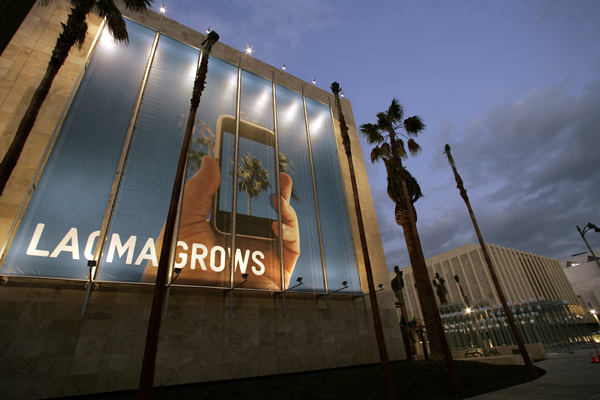
LACMA purchases a tract of land across the street from the Broad Contemporary Art Museum.
“This is part of the big plan,” Councilman Tom LaBonge tells The Times. “It’s all going to be complementary, and one day there’s going to be a subway stop there, and everybody in the county can ride transit to that wonderful complex of art museums.”
Resnick Pavilion opens
The 45,000-square-foot, $54-million Lynda and Stewart Resnick Exhibition Pavilion officially opens to the public. The building is home to a rotating selection of exhibitions.
Times architecture critic Christopher Hawthorne says Renzo Piano’s second gallery building on the LACMA campus is “more tightly executed and focused” than his initial effort, the 2008 Broad Contemporary Art Museum.
“The Resnick Pavilion has a restrained confidence and assured posture that reminds us why [Piano] has been the world’s most sought-after museum architect for much of the last decade,” Hawthorne writes.
Ray’s and Stark Bar opens
Ray’s and Stark Bar open across the courtyard from the Resnick Pavilion. The bar and restaurant are named for late movie producer and former LACMA trustee Ray Stark.
“Museums aren’t, in general, known for harboring distinguished restaurants,” restaurant critic S. Irene Virbila writes in her Times review in early summer. “This, though, has more ambition and is actually pulling it off. The 3-month-old Ray’s can easily hold its own against some of Los Angeles’ best Mediterranean bistros. That’s something.”
Tim Burton comes to LACMA
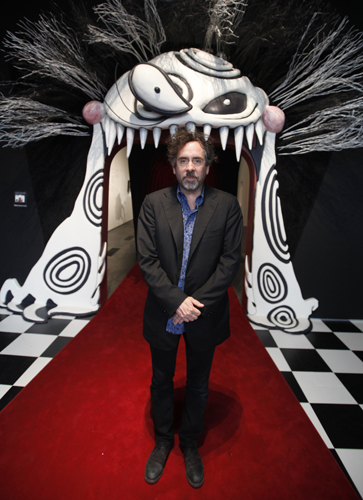
A Tim Burton retrospective opens, attracting legions of the filmmaker’s fans. The exhibition comprises drawings, paintings, photographs, video, storyboards and costumes from the Burton’s career, highlighting such films as “The Nightmare Before Christmas” and “Batman.” Burton created new work for the show, including a carousel installation that revolves to music composed by Danny Elfman. The exhibition draws 363,000 visitors.
LACMA acquires elevator shaft mural
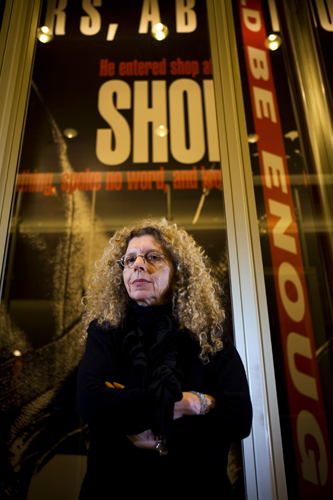
LACMA at last acquires Barbara Kruger’s “Untitled (Shafted),” a 94-foot-tall, red, white and black mural that wraps around the Broad Contemporary Art Museum’s elevator shaft. Commissioned for the BCAM, the artwork has been on display there since 2008, but the museum didn’t have the funds to purchase it. LACMA trustee Carole Bayer Sager buys the work for the museum.
Academy to lease May Co. building
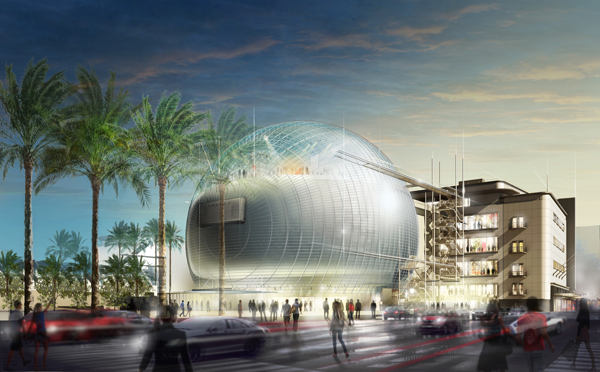
The Academy of Motion Picture Arts and Sciences Board of Governors votes to locate a long-discussed cinema history museum in the former May Co. department store building, now LACMA West.
The organizations develop plans for a long-term lease.
“At least from a bottom-line perspective, it’s easy to see the thinking behind the decision by Govan and his board to hand over the old May Co. building,” Times architecture critic Christopher Hawthorne writes. “In a single stroke, Govan has freed LACMA from the cost of renovating the building for its own use and guaranteed a steady stream of lease revenue and new visitors.”
‘Metropolis II’ zooms into LACMA
LACMA begins showing Chris Burden’s “Metropolis II,” a miniature city that resembles a toy racetrack. The installation features 1,100 Hot Wheels-sized cars zooming across 18 lanes of traffic at 240 miles per hour to scale, as well as 13 trains and a tangle of freeways and skyscrapers.
‘Levitated Mass’ opens
Michael Heizer’s “Levitated Mass,” a $10-million environmental sculpture, opens on LACMA grounds. The piece features a 340-ton boulder that drew intense public attention over its 11-night, 7-mph journey from a quarry in Riverside to the Wilshire Boulevard museum.
Kubrick exhibition opens
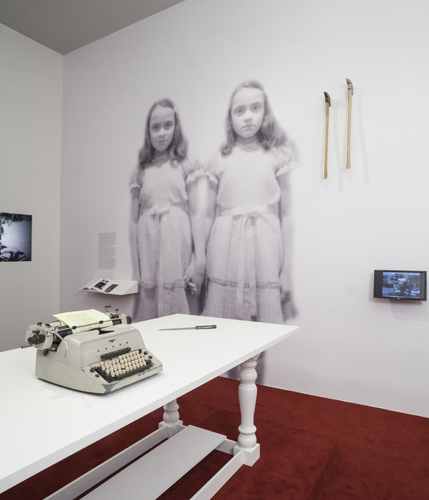
A massive exhibition devoted to perfectionist filmmaker Stanley Kubrick opens. More than 1,000 objects — including an ax from “The Shining,” orgy masks from “Eyes Wide Shut” and props from “A Clockwork Orange” — are on display. Some 243,000 visitors attend the exhibit.
Radical redesign unveiled
LACMA unveils a $600-million plan for an unorthodox new building designed by Swiss architect Peter Zumthor. The design, revealed in an exhibition called “The Presence of the Past: Peter Zumthor Reconsiders LACMA,” requires the demolition of the museum’s original campus — William L. Pereira’s three 1965 buildings and the 1986 Robert O. Anderson addition, now known as the Art of the Americas building. Times architecture critic Christopher Hawthorne calls Zumthor’s design “bracingly forward-looking” and “powerfully unorthodox.”
Calder show spotlights abstract art
“Calder and Abstraction: From Avant-Garde to Iconic,” an exhibition celebrating the work of Alexander Calder, opens to the public. The show casts a spotlight on an important work in LACMA’s permanent collection —— Calder’s “Three Quintains (Hello Girls)” which was commissioned for the museum’s opening some five decades earlier.
Art + Technology lab resurrected
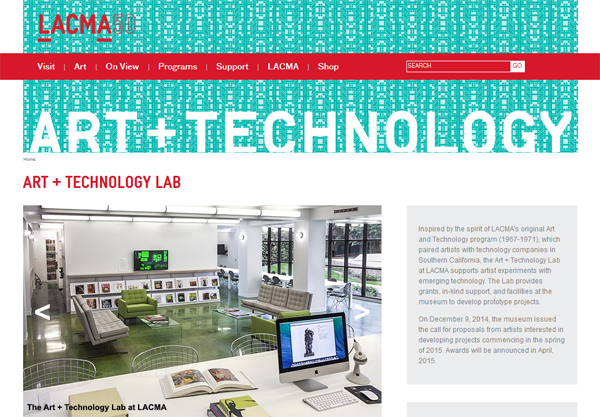
LACMA unveils plans for the Art + Technology Lab, which teams with companies like Google and SpaceX to support artists who want to experiment with new technologies. The program is inspired by LACMA’s 1967-1971 “Art and Technology” exhibition.
“Nearly 50 years later, we’ve updated the program to encompass the entrepreneurial spirit redefining so many industries,” director Michael Govan says. “The Art + Technology Lab is designed to be an open and impartial space for artists to explore new frontiers.”
Redesign addresses tar pit concerns
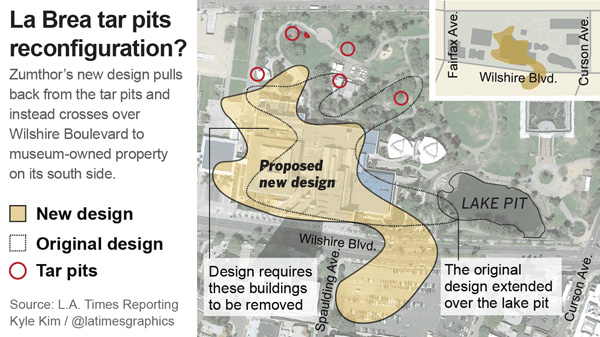
Architect Peter Zumthor alters the design of a proposed new building after leaders at LACMA’s neighbor, the Page Museum, express concern that the new edifice could damage the La Brea tar pits.
Zumthor’s original design included an overhang that may have blocked off light and rain, affecting vegetation surrounding the tar pits — an active paleontological research site with a rich deposit of Pleistocene-era fossils. The redesign pulls the building back from the tar pits and instead extends the museum south, spanning Wilshire Boulevard, with car traffic flowing beneath.
“There’s no intention to impinge on the tar pits in a negative way,” LACMA Director Michael Govan says. “The building is emerging as a sort of celebration of the tar pits; it’s meant to magnify the extraordinary natural feature of the site.”
Board of Supervisors approves building plan
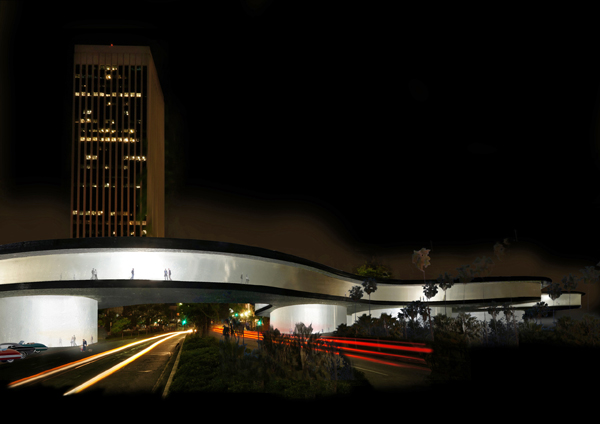
The L.A. County Board of Supervisors approves funding for its share of LACMA’s $600-million makeover plan, which would tear down the three buildings that made up the museum’s original 1965 campus and build a 410,000-square-foot new building designed by Swiss architect Peter Zumthor.
The board praises Director Michael Govan for “embracing the future with imagination.”
In his pitch for the supervisors, Govan says the old buildings are “really ailing” and “not worth saving.”
“The new building will be much more energy efficient and accessible to a broad public,” he says.
Donor pledges $500-million bequest
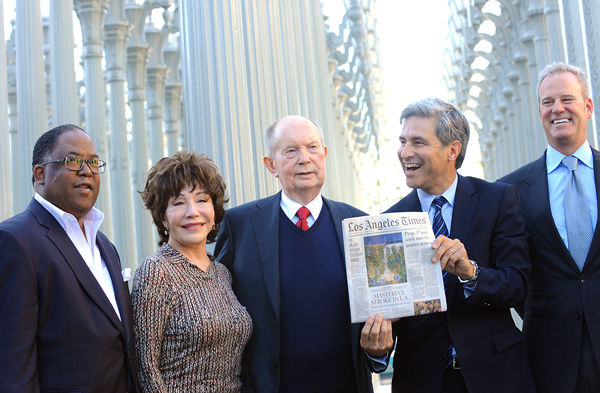
The day after securing a pledge for funding from the L.A. County Board of Supervisors for its new museum building, LACMA receives a major art donation from media mogul A. Jerrold Perenchio, who promises nearly 50 paintings, drawings and sculptures from masters such as Manet, Degas, Cezanne, Monet and Pissarro. The bequest, contingent on the new building’s completion, is valued at $500 million.
“L.A. is my home, and I wanted to leave it to a museum here,” Perenchio told The Times.
MTA breaks ground on subway extension
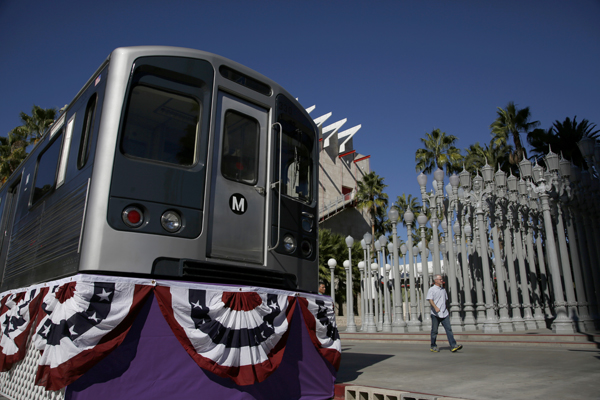
In a ceremony held at LACMA, the Metropolitan Transportation Authority breaks ground on the first phase of a subway extension that will bring the Purple Line to the museum’s front door.
Zumthor plan gets a makeover
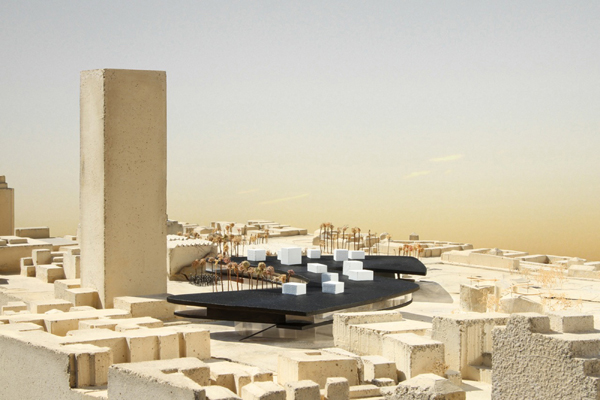
Architect Peter Zumthor revises his plan for LACMA’s makeover, reigning in the original design’s undulating curves and adding more angular edges. The 400,000-square-foot museum is scheduled to break ground in 2018 and complete construction in 2023.
